
Wood split rail fence has been around for hundreds of years. The simple design has stood the test of time. Its first intended use was as an effective means of corralling livestock and horses. However, it has now become widely used in both farming and residential settings.
Once used only to contain large animals, the addition of a wire mesh allows it to easily contains small animals and pets. Offered in 2 rail, 3 rail and 4 rail options. The versatility of this classic fence design makes wood split rail fence useful for all sorts of applications.
Defining property lines, lining the perimeters of parking lots and trimming the edges of walking trails are all common places to find split rail fencing adding a sense of rustic charm.
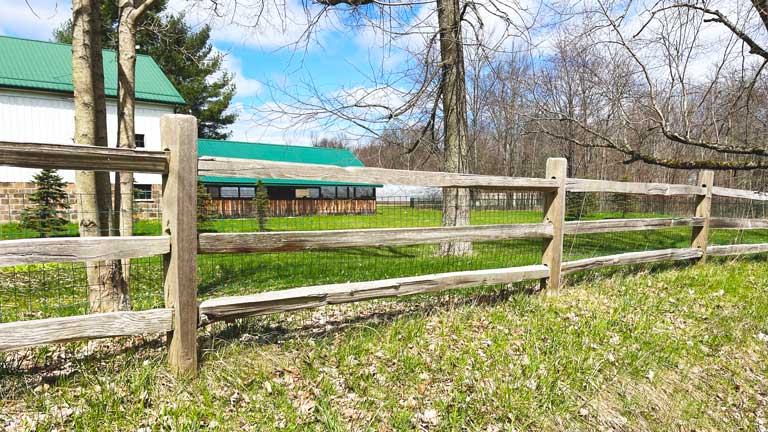
Lumber Choices and Options
Farmers and ranches have been building wood split rail fence for decades. Their go to choice in lumber? Anything they could find. Whatever species of tree grew natively in the location they farmed was what they constructed the fence from.
However, today things are different. Because of how popular wood split rail fencing has become, we now have many manufactures commercially manufacturing it. As a result, a trip to the local home center or lumber yard and you’ll be able to find it.
Today, commercially manufactured wood split rail fence come in three types of lumber. Western Red Cedar, Pressure Treated Yellow Pine and Black Locust Fence Posts with Hard Wood Fence Rails. However, depending on region, one type of wood may be more readily available than others.
Let’s review the three types of wood split rail fence and take a closer look at why one choice in lumber might be better than the others for your application.
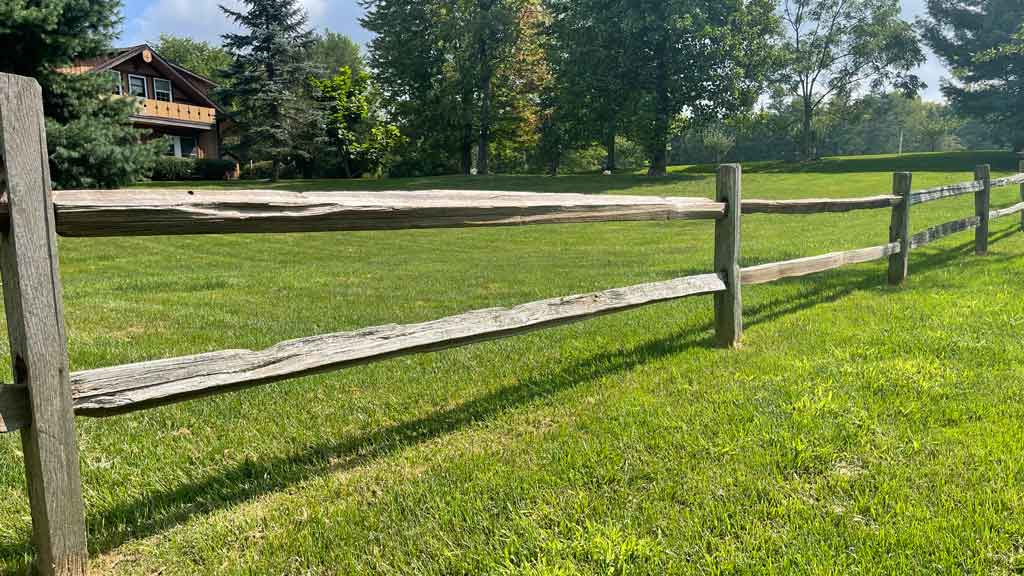
Black Locust Posts with Hardwood Rails
Black locust lumber is a very dense wood. As a result, making it very strong. Wood split rail posts made from black locust are stronger than any other type of lumber. Therefore, an excellent choice for farm and ranch fence.
The extra strength of the locust fence posts is helpful when containing large farm animals like cattle and horses.
Locust posts last for decades without any maintenance or treatment. Not worrying about fence repairs is very appealing to farmers and ranchers.
The hardwood lumber used for rails comes from Poplar or Hemlock trees and taper down at the ends. Known as paddle ends. As a result, allowing them to overlap each other when inserted through the holes in the posts.
Large farm animals like to scratch themselves against fence posts. As a result, the posts shift or lean over time. Overlapping paddle ends prevent the rails from falling out if the posts should move.
Pressure Treated Yellow Pine Wood Split Rail Fence
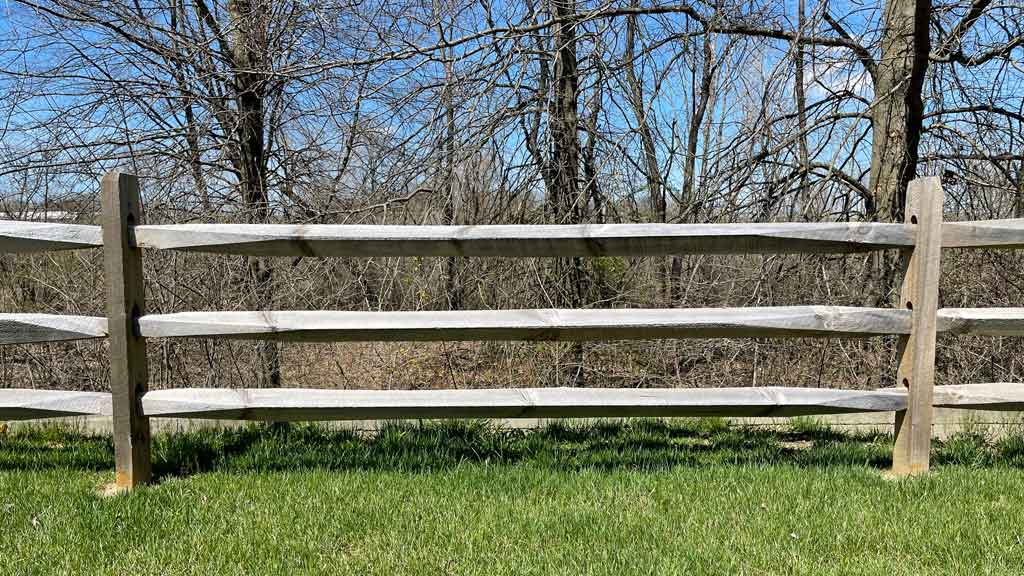
With pressure treated wood split rail fencing, both the posts and rails are yellow pine. Chemicals pressurized into the lumber help fight against rot and decay. It is the only type of lumber that uses a chemical to fight the elements.
The post and rails are just like the locust posts and hardwood rails. However, not nearly as strong. Furthermore, the posts are more consistent when cut at the sawmill. Therefore, providing more of a uniform look that homeowners like.
For most residential and light farming purposes, treated wood split rail fencing is more than strong enough. Because southern yellow pine grows so fast, it is readily available and more affordable than the other types of lumber. Life expectancy is between 15 – 20 years.
Western Red Cedar Wood Split Rail Fence

Western red cedar is a very popular type of of lumber for all types of wood fence. Its natural capability to repel the elements and insects means it will last a long time. Therefore, there is no need to treat western red cedar wood split rail fence. Life expectancies of over 30 years are not uncommon.
Cedar split rail wood rails have different ends cut onto them from the other two types. Cedar rails have a tenon. The hole in a cedar post acts as the mortise. They fit together well when assembled. However, the tenon and mortise fit is not good for large farm animals that move posts around. The rails easily fall out as a result of them not overlapping.
Cedar trees are indigenous to the west coast. As a result, cedar fence sold in the eastern sates is often more expensive than the other two types of lumber. Furthermore, cedar does better in dryer climates.
Wet soil conditions and damp climates promote faster rotting and decay with cedar wood fencing. Cedar fences in shady areas, not exposed to sunlight, tend to grown mildew or mold faster than the other types of lumber for wood split rail fencing.
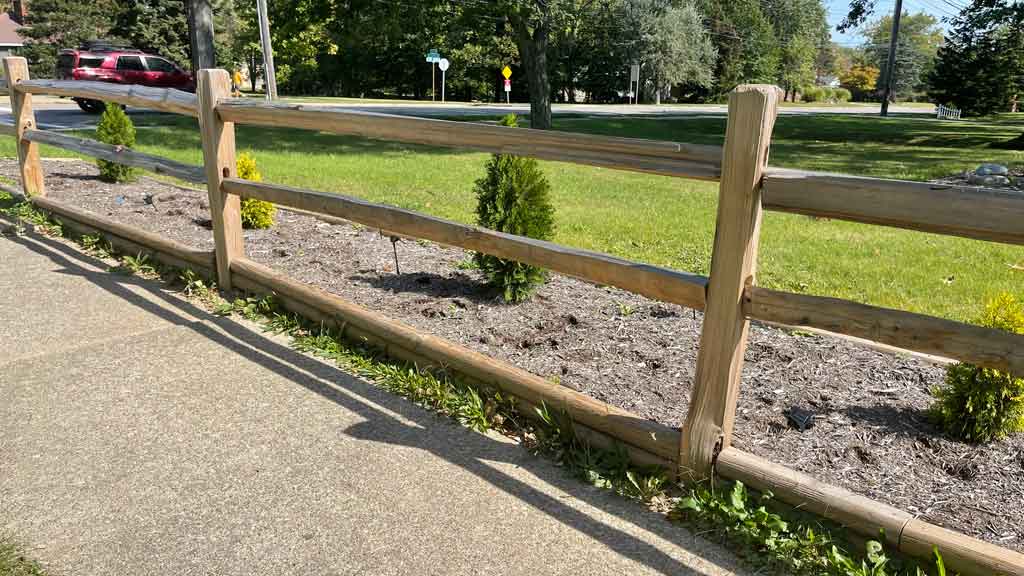
What is the Best Wood to use for Split Rail Fence?
There is no one type of wood that is best. Each lumber type discussed has advantages and disadvantages the others don’t. Furthermore, the purpose and use of your fence will influence the decision of what type of wood to choose. Pricing and availability of material may too.
In order to help you decide, we have put a list of pros and cons together pointing out the main features of the three types of wood split rail fencing below.
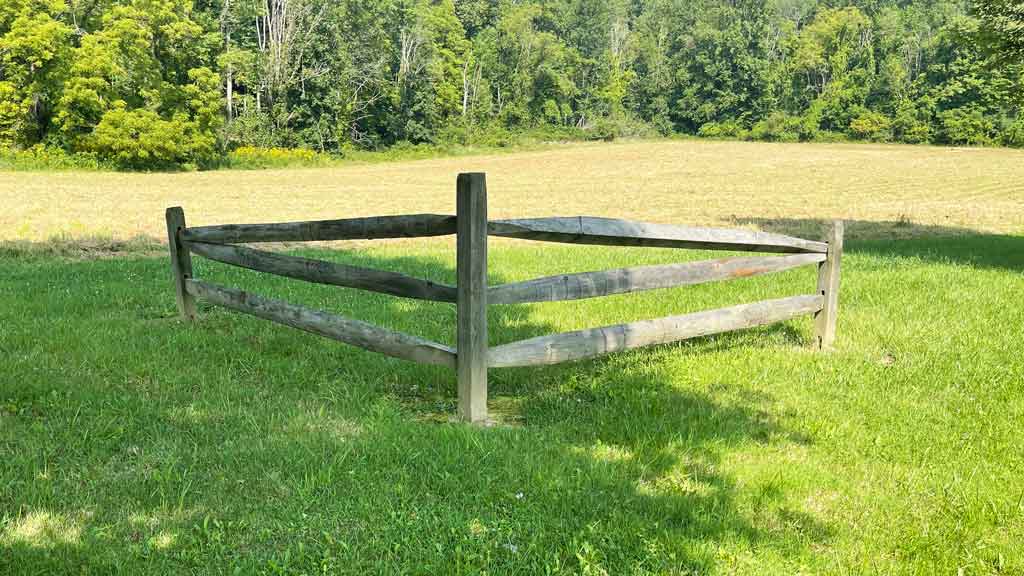
Locust Posts with Hardwood Rails
Pros
- Strongest of all posts
- Longest last life expectancy – 30 years plus
- Best for farms and rancher
- Interlocking rails with paddle ends
Cons
- Not as many manufactures
- Harder to find
- Posts not as uniform as treated posts
Pressure Treated Yellow Pine
Pros
- Readily available
- Strong enough for most applications
- Least expensive
- Interlocking rials with paddle ends
Cons
- Uses chemicals to fight elements
- Shortest life expectancy 15 – 20 years
Western Red Cedar
Pros
- Unique beautiful look on found with cedar
- Naturally weather resistant / No chemicals
- Long lasting – Up to 30 years
- Rustic Charm
Cons
- Not as good in wet or damp climates and soils
- Tenon and mortise fit for rail not good for large farm animals
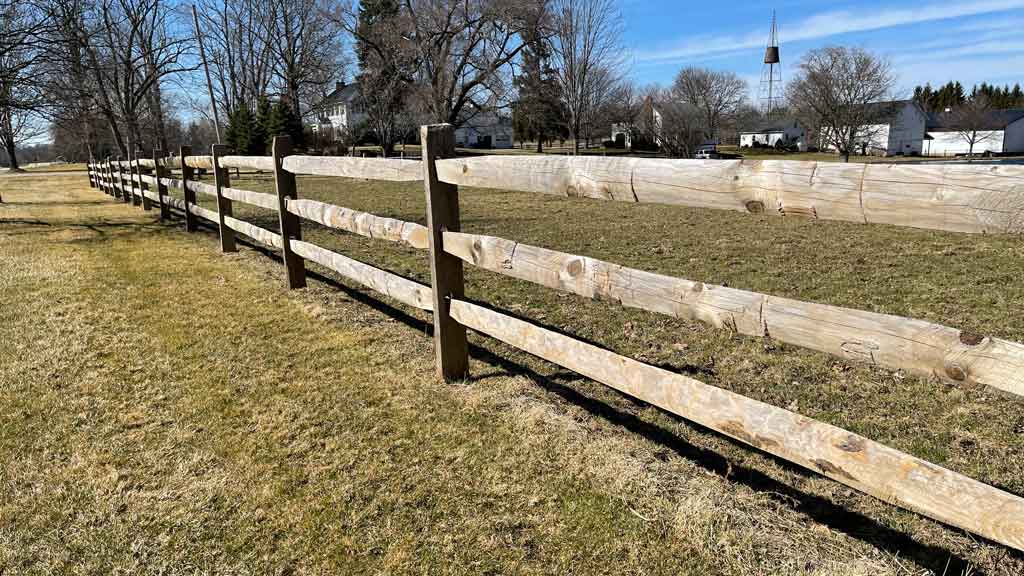
Conclusion
Wood split rail fencing is affordable, functional and easy to install. A task easily accomplished by farmers and ranchers.
Many homeowners also take on the challenge of installing it themselves. It’s supposed to look rustic. So installations that are less than perfect do not stand out.
With multiple lumber choices, there is a fence to meet every need. However, as stated above, some lumber types will have advantages over other types depending on use and the location installed.
For more information on these rustic fences, checkout out our blog posts about split rail fence with wire mesh or split rail dog fence.

